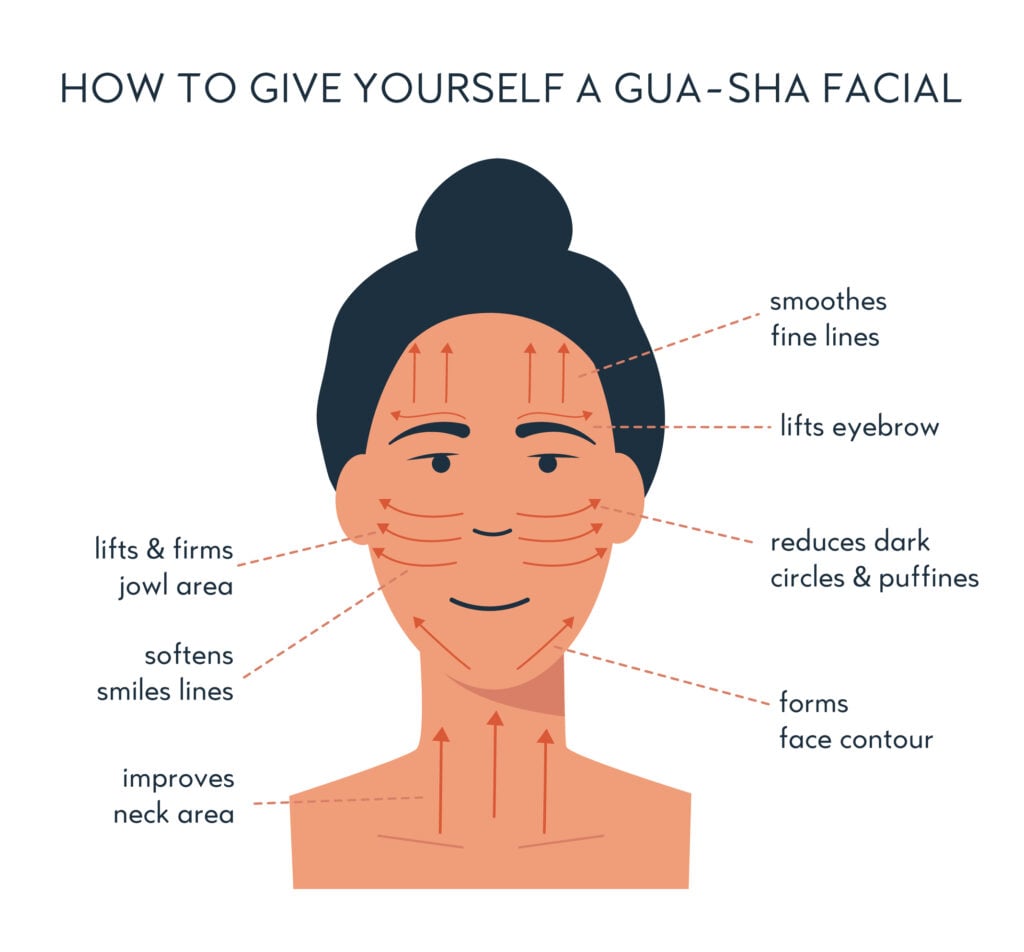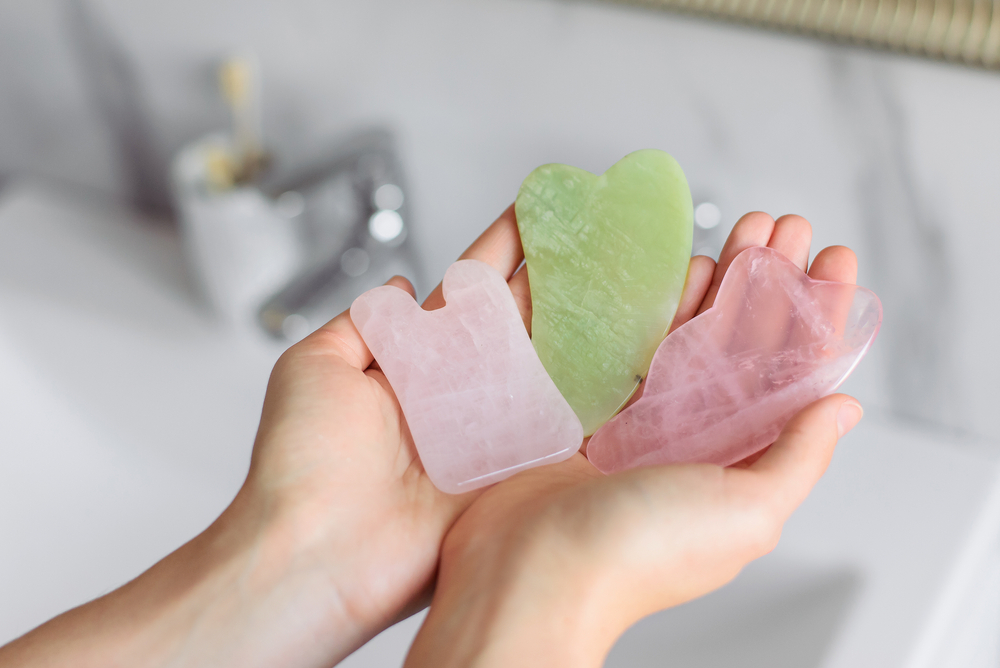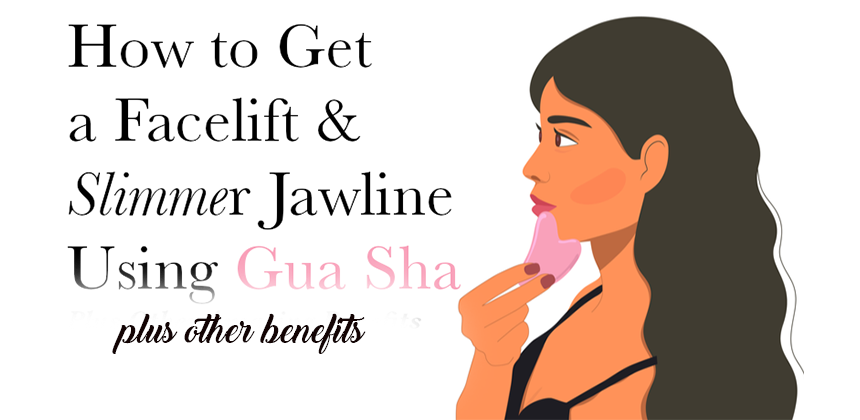Everyone wants to find ways that they can get the best skin complexion. A way that you may get a facelift at home is by using Gua Sha, a body and face scraping technique that may be used for a variety of health benefits.
What Is Gua Sha?
In TCM, gua sha is believed to move blood and qi. The common conditions and symptoms treated with gua sha include scar tissue, poor circulation, and carpal tunnel syndrome. “In TCM, if there is blood stagnation or a blockage of qi, pain or illness is the result,” says Gabriel Sher, the director of acupuncture at ORA in New York City. “Gua sha disperses stagnant blood and energy, facilitating the free flow of qi throughout the body.” Practitioners commonly use polished tools made of jade, quartz, or bone, according to Shari Auth, DACM, the co-founder of WTHN studio in New York City.

Using a gua sha massage tool, you scrape your skin with short or long strokes to stimulate microcirculation of the soft tissue, which increases blood flow. You can apply massage oil to your skin, and then use the tool to repeatedly scrape your skin to help reduce inflammation, according to Debora Rose Wilson, Ph.D. Gua sha is generally performed on a person’s back, neck, arms, and legs but it can be also used on the face as a facial technique.
You can get your own gua massage tool here.

Benefits of Gua Sha
According to Sandra Lanshin Chiu, founder of Treatment by Lanshin in Brooklyn, facial gua sha is gentle and involves “slow stroking and massaging the face and neck to improve circulation and release tension, which can leave it less puffy and more glowy.”
Gua sha helps increase blood flow in the face, which creates a heightened update of nutrients and oxygen shifts toxins, and leads to healthier skin, according to author Roberta Schroeder. This can also help reduce skin infections and breakouts. So gua sha can help to boost blood flow, helping the lymph system – potentially leading to clearer skin – and ease a clenched jaw.
“Facial gua sha increases circulation and the production of anti-aging molecules, collagen, and elastin,” says Auth. Collagen helps reduce wrinkles, and elastin helps to firm and tone the face. So gua sha can lead to a clear complexion.

How to Do It
A polished tool made from jade or quartz is used to massage the face, says Auth. The stokes and direction that you use the tool are how it will benefit your facial skin. It is also recommended to use a moisturizer or facial oil before starting.
To reduce puffiness around the eyes: Lubricate your eye are with lotion or oil. Sweep the gua sha tool over the under-eye area and out to the temple, all the way to the hairline. Repeat three times on each eye, then work the tool from the inside corner of the brow bone out to the temple.
To promote lymphatic drainage: Start at the chin, then sweep the gua sha tool along your jawline and up to the ear. Move the tool behind the earlobe, and down the neck. Repeat three times.
To contour and de-puff your nose: Lightly scrape the tool up the bridge of your nose. Bring it down along the side of the nose to the cheek. Repeat three times.
To contour and de-puff the chin: Gently guide the tool from the middle of your chin along your jawline toward the ear. Repeat three times on both sides of your face.
How Often Should You Do It
Recommended by Chiu, practicing facial gua sha at least three times a week will help you maintain the results of your at-home facial. “Start with a hydrating mist or alcohol-free toner followed by a facial oil or moisturizer to prep your skin and get the necessary ‘glide,’” says Chiu. You will have better results if your skin is hydrated.



